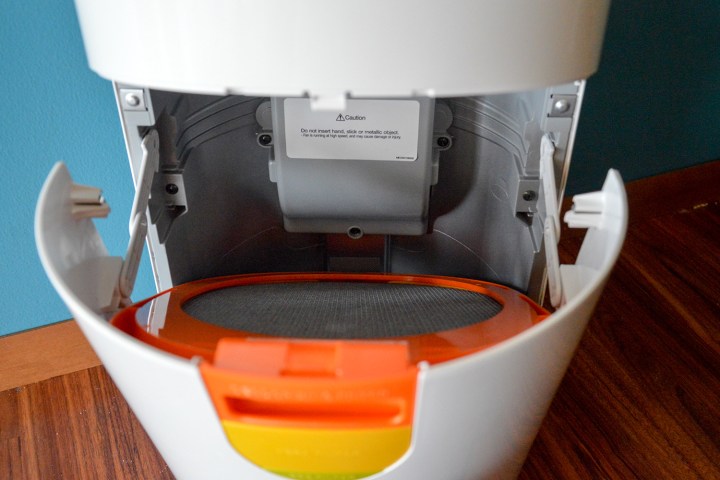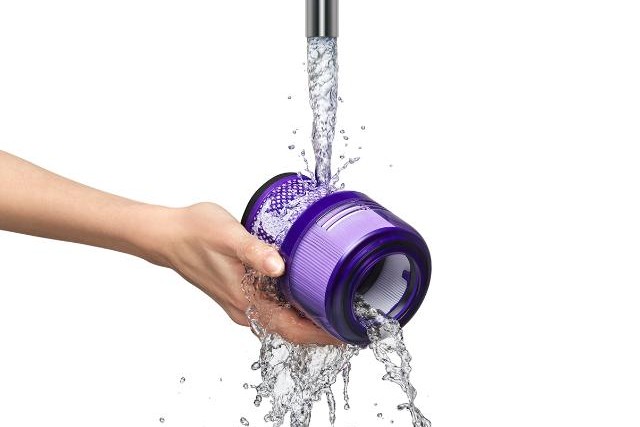
Air purifiers are an important part of any smart home, but they’re particularly useful in the spring and summer. These nifty devices make it easy to eliminate airborne particulates such as dust and pollen, giving you a reprieve from seasonal allergies. Many are also equipped to handle wildfire smoke – which is a growing concern in the western U.S.
While most air purifiers can run autonomously for weeks without any manual intervention, there will come a time when you need to pop open its chassis and clean its filters. And if it’s doing its job correctly, you should find plenty of dust and debris trapped inside. Interested in learning more about how to properly clean your air purifier? Here’s a comprehensive look at everything you need to know.
Watch for filter alerts
Smart air purifiers use indicators, messages, and alerts to let owners know when it’s time to change filters. This is an excellent opportunity to give your purifier a full cleaning. Always check your owner’s manual for more information about when to clean filters, and know specific alerts or light colors to watch out for.

Remove all filters
Air purifiers tend to use several different filters at once to help filter out a variety of particles from the air, trap odors, and so on. Look at your owner’s manual to find out exactly how to remove them. Some filters can be lifted out of the top of the purifier without a problem. Others are kept behind a latched panel that you need to disconnect to pull out the filter. Make sure you have removed every filter from the purifier – most products use two or three.
Check to see if any filters are disposable and replace them
Some air purifiers use disposable filters designed to be thrown away, others use permanent filters that you can wash, and many use a combination of both. Next, examine each filter and look in your owner’s manual to find out which are disposable and which are not. If the filter has a product number on it, you can look up that filter online quickly to find more information.
Ideally, your purifier came with a couple of extra filters you can use to replace disposable models. This doesn’t always happen, so you’ll have to order more online if necessary. That can delay the cleaning by a few days while you’re waiting for the filters to arrive, but it’s a good idea to order enough filters to last a year or two so you aren’t caught without any again.
Many manufacturers also offer a subscription plan that automatically ships new filters to your home when your purifier is expected to need a replacement (say, every 30 days).

Rinse and dry your permanent filters
Permanent filters are generally designed to be rinsed off and dried. Take the filter to the sink and wash it in lukewarm water until the water runs clear and the filter is cleaned. It’s okay to use a light spray setting on your faucet to clean the filter, but don’t use any jets or more forceful modes — filters can be delicate.
After washing them clean, set your filters out to dry. Filters should be completely dry before going back into the purifier. Otherwise, remaining dampness can impede air purifier operation and raise the risk of mold or mildew. It often takes filters a full day to completely dry out.
Give your carbon filters some sun
A common option in smart air filters is the carbon filter, which uses carbon to trap odors. These filters should not be washed, and they don’t always need to be replaced. Instead, find a sunny spot and leave them out for a day or so. This will help dispel the odors trapped inside.
Otherwise, there’s not much you can do with these filters except replace them as necessary. Carbon filters need to be replaced very often, around every several months, which can be too frequent for some users … that’s why sunshine is a potential life extender.
Drain and clean the air purifier
With the filters out, it’s time to clean the purifier itself. Many purifiers have tanks to hold water for humidifying or water drainage containers for dehumidifying. Start by draining those containers if necessary. Then take a clean, slightly damp cloth, and wipe down the air purifier both outside and in. Pay special attention to the corners where grime can build up. If possible, access the fan system and wipe down the fan blades to remove all dust buildup.
Let your air purifier dry out along with your filters, and when everything is fully dry, you can reassemble the model and begin to use it again.

What if you have a HEPA filter?
HEPA filters are designed to filter out extra-small particles from the air, and a variety of air purifiers use some version of them. Some HEPA filters are permanent and designed to be washed, but true HEPA filters are generally disposable and need to be replaced, so it’s important to stock up if necessary.
How often should you clean an air purifier?
That depends partly on what sort of filters it uses, as filters have different lifespans. Generally, you should clean any permanent filters every three to four months. If your purifier only uses disposable filters, give it a general cleaning at least once a year.
If you want to make the most out of your air purifier, consider cleaning any prefilters every month. This ensures that there’s sufficient airflow to move airborne particulates through your air purifier. A dirty prefilter means you could run into airflow issues, resulting in a suboptimal cleaning.



